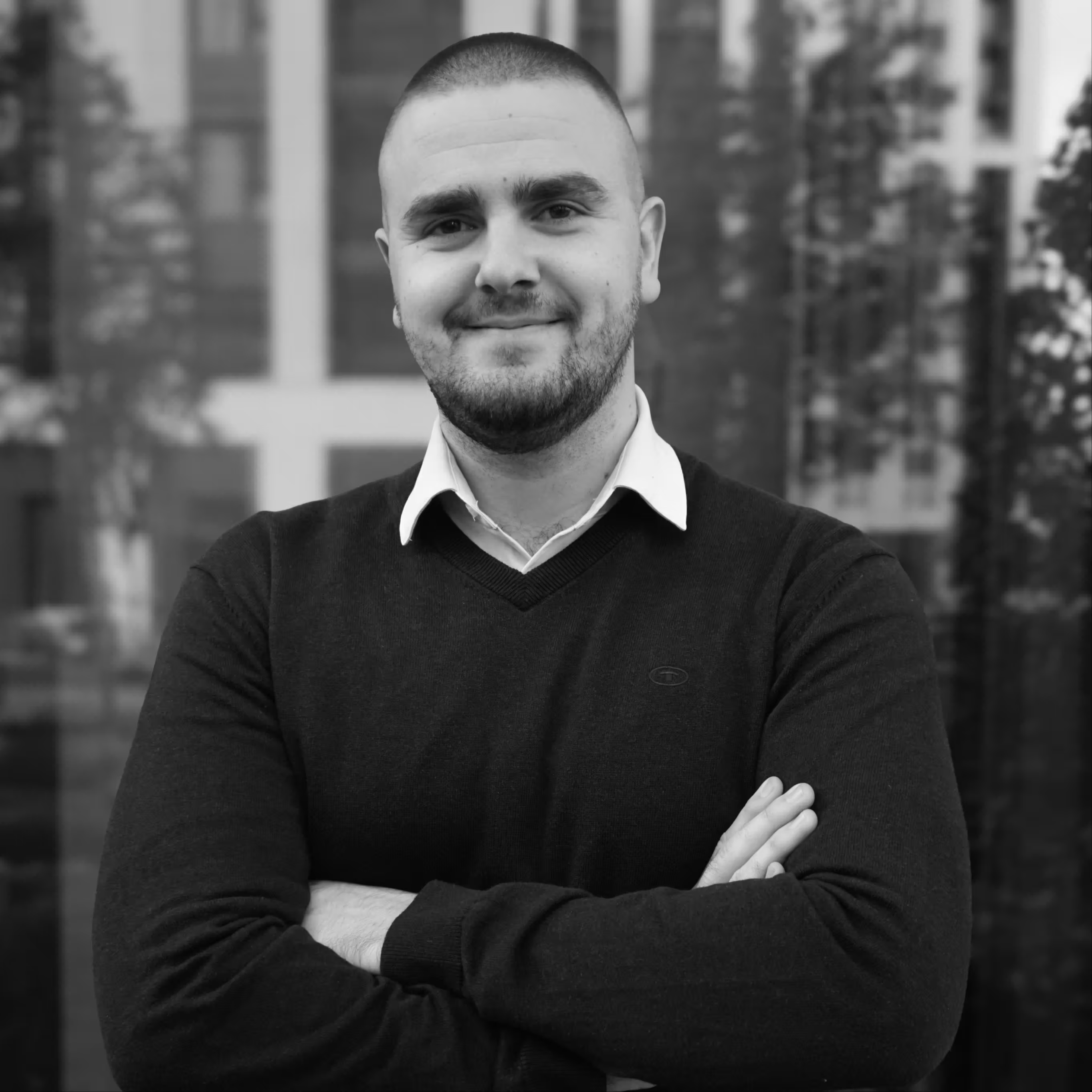By Mladen Terzic
Shopify SEO Updates
26th May 2025
10 min read
Shopify Pagination URLs: SEO Best Practices
Master Shopify pagination and boost your store’s SEO by using canonical tags, prev/next links and dynamic metadata. Follow step-by-step Liquid examples and advanced tips to prevent duplicate content and improve crawl efficiency.

Struggling with Shopify pagination and its impact on SEO? Poor pagination can cause duplicate content, waste crawl budgets, and hurt rankings. Here’s how to fix it:
- Use Canonical Tags: Prevent duplicate content by guiding search engines to the preferred page version.
- Add Prev/Next Links: Improve navigation and crawlability with clear internal linking.
- Optimize Metadata: Include page numbers in titles, descriptions, and headings to make each page unique.
- Enhance Content: Add distinct elements like buying guides, seasonal highlights, or testimonials to paginated pages.
These simple tweaks can improve both user experience and your Shopify store's search engine performance. Keep reading for detailed implementation tips and code examples.
Shopify Canonical Issues and How to Fix

What is Shopify Pagination?
Shopify pagination is a navigation tool that splits large collections of content into smaller, sequential pages. This is especially useful for eCommerce stores with extensive product catalogs, blog posts, or other content that would be too much to display on a single page.
Breaking Down Shopify Pagination
Pagination in Shopify organizes large amounts of content into smaller, easier-to-view sections. This setup improves page load times, enhances the browsing experience for users, and makes it easier for search engines to crawl your site.
How Shopify Implements Pagination
Shopify relies on its templating language, Liquid, to handle pagination. The system creates sequential URLs in the format /collections/category?page=n, where 'n' is the page number.
Here’s an example of how Shopify’s pagination works in Liquid:
{% paginate collection.products by 20 %}
{% for product in collection.products %}
<!-- product display code -->
{% endfor %}
{% if paginate.pages > 1 %}
<!-- pagination navigation -->
{% endif %}
{% endpaginate %}
To ensure good SEO practices, developers often tweak canonical tags and metadata for these paginated URLs. This helps avoid duplicate content issues and improves how search engines interact with your site.
Now that you know how Shopify handles pagination, it's time to dive into strategies for optimizing these URLs for better search engine performance.
SEO Tips for Shopify Pagination URLs
Using Canonical Tags for Pagination
Canonical tags play a key role in avoiding duplicate content issues with Shopify pagination. They guide search engines to the preferred version of a page in a paginated series. For example, on the first page, a self-referential canonical tag signals the primary page.
Here's a simple way to set up canonical tags:
{% if paginate.current_page == 1 %}
<link rel="canonical" href="{{ canonical_url }}" />
{% else %}
<link rel="canonical" href="{{ canonical_url }}?page={{ paginate.current_page }}" />
{% endif %}
This approach ensures search engines understand the relationship between paginated pages and treat them correctly.
Improving Internal Links and Navigation
A well-structured internal linking system helps users and search engines navigate your paginated content. It also improves crawlability and ensures all pages in the series are indexed.
Use the following code to add "prev" and "next" links:
{% if paginate.previous %}
<link rel="prev" href="{{ paginate.previous.url }}" />
{% endif %}
{% if paginate.next %}
<link rel="next" href="{{ paginate.next.url }}" />
{% endif %}
These links establish a clear sequence, making it easier for search engines to follow the pagination.
Optimizing Metadata for Paginated Pages
Metadata optimization helps keep each paginated page relevant and distinct. Dynamically adding page numbers to titles, descriptions, and headings can make a big difference.
| Element | Format | Example |
|---|---|---|
| Title Tag | Main Topic - Page X of Y | "Summer Collection - Page 2 of 5" |
| Meta Description | Context + Page Indicator | "Explore our summer collection (Page 2)" |
| H1 Heading | Collection Name + Page Number | "Summer Collection - Page 2" |
To implement this, modify your theme's liquid files. Here's an example for the title tag:
<title>
{{ collection.title }}{% if paginate.current_page > 1 %} - Page {{ paginate.current_page }} of {{ paginate.pages }}{% endif %}
</title>
sbb-itb-6dc743d
Advanced Shopify Pagination Techniques
Customizing Pagination Labels
You can tweak your Shopify theme's Liquid files to create more descriptive navigation labels. This helps users quickly understand their location within paginated content and can also boost SEO. Here's an example of how to do it:
<nav class="pagination" role="navigation">
{% if paginate.next %}
<a href="{{ paginate.next.url }}" class="next-page">
View {{ collection.title }} - Page {{ paginate.current_page | plus: 1 }}
</a>
{% endif %}
</nav>
These small adjustments make navigation clearer and more user-friendly. However, don't forget that accessibility is just as important.
Making Pagination Accessible
To make your pagination accessible, use ARIA (Accessible Rich Internet Applications) attributes along with semantic HTML. This ensures screen readers can interpret your navigation correctly. For example:
- Use
aria-current="page"to indicate the active page. - Structure your pagination with elements like
<nav>and<ul>. - Add clear, descriptive labels to navigation elements for better clarity.
By combining these practices, you can create a navigation system that works for everyone, including users relying on assistive technologies.
Improving Content on Paginated Pages
Paginated pages should offer unique and valuable content to both users and search engines. Here are some ways to achieve this:
- Add distinct content blocks to each page, such as:
- Buying guides tailored to specific categories
- Spotlights on featured products
- Seasonal collection highlights
- Customer testimonials that match the displayed products
- Ensure consistent quality across all pages while making each one unique:
- Write category-specific descriptions
- Showcase different featured products on each page
- Rotate customer reviews and testimonials to keep content fresh
- Use lazy loading for images to maintain fast page speeds
How Codersy Can Help with Shopify SEO

Effective pagination plays a big role in SEO, and Codersy offers customized solutions to tackle these challenges for Shopify stores. With their technical know-how and custom development skills, they focus on making pagination work seamlessly for both users and search engines.
Here’s how Codersy handles pagination optimization:
Key Implementations
Custom Canonical Tag Integration: Codersy adjusts canonical tag placement to avoid duplicate content issues and improve indexing [3].
Advanced Metadata Optimization: By using custom Liquid code, Codersy ensures paginated pages have unique metadata, boosting their relevance and clarity for search engines [2].
| Optimization Area | Technical Implementation | SEO Benefit |
|---|---|---|
| Canonical Tags | Custom theme.liquid modifications | Avoids duplicate content indexing |
| Internal Linking | Implementation of prev/next tags | Enhances crawlability and indexing |
| Metadata | Dynamic Liquid code integration | Improves visibility in search results |
| Navigation Structure | Custom pagination templates | Strengthens user experience signals |
Technical SEO Infrastructure
Codersy goes beyond just pagination tweaks. Their broader technical SEO solutions include:
- Custom theme development with well-structured pagination
- Advanced internal linking systems designed for better accessibility
- Tools for monitoring and improving site performance
They also provide ongoing support to keep your Shopify store aligned with the latest SEO standards. This includes regular performance checks and updates to ensure your site remains search-engine friendly as Shopify evolves.
Wrapping Up
Effective Shopify pagination is a game-changer for both SEO and user experience. It helps tackle issues like duplicate content and improves how search engines crawl your site.
Key strategies include using canonical tags to avoid duplicate content, internal linking to strengthen site structure, and dynamic metadata to differentiate paginated pages. These techniques address common SEO problems, such as wasted crawl budget and duplicate content, keeping your Shopify store competitive in search rankings [2].
Here’s a quick breakdown of the benefits:
| Focus Area | What It Does |
|---|---|
| Canonical Tags | Avoids duplicate content |
| Internal Links | Boosts crawl efficiency |
| Metadata | Enhances search visibility |
| Navigation | Improves user experience |
Keep in mind that search engine algorithms and Shopify’s platform are constantly changing. Regularly reviewing and updating your pagination setup is key to staying ahead in the eCommerce world.
FAQs
Let's tackle some common questions about Shopify pagination and its impact on SEO.
Is pagination good for SEO?
When done right, pagination can help SEO in two major ways: it helps search engines index your content and improves how users navigate your site [1].
Here’s a quick look at the SEO perks of pagination:
| Benefit | SEO Impact |
|---|---|
| Better Crawling and Indexing | Helps search engines find and crawl content efficiently |
| Improved User Experience | Simplifies navigation and lowers bounce rates |
| Organized Content | Keeps large product catalogs easy to browse |
But here’s the catch — proper setup is crucial to make these benefits work. This includes addressing issues like duplicate content and inefficient crawling, which we discussed earlier.
"Implementing self-referential canonical tags on the first page and canonical tags pointing to the first page on subsequent pages is essential for avoiding duplicate content issues in Shopify pagination" [1].
To get the best results, focus on using correct canonical tags, creating unique metadata, and setting up clear navigation links [2]. For Shopify collection pages with over 100 products, these elements are critical for both search engines and users to navigate your site effectively.
If you’re unsure about the technical details, working with a Shopify SEO expert can help you set up pagination correctly. This ensures your site stays visible in search results while offering a smooth experience for users [1].



